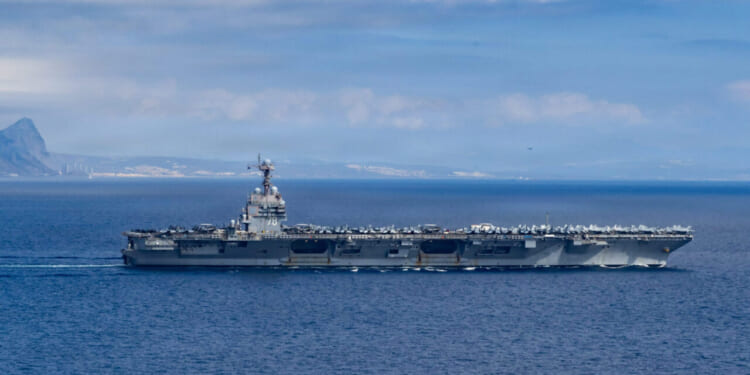USS Ford (CVN-78) represents a generational leap in the Navy’s power projection strategy.
While the US Navy’s 10 Nimitz-class supercarriers have earned their reputation as true forces of power projection, the service’s newest carrier class is considered to be even more capable. Currently, the USS Gerald R. Ford remains the only Ford-class boat in operation today. As the lead ship of her class, Ford will soon be joined by her sister ships as their Nimitz predecessors retire. The upcoming carriers will specifically replace the Nimitz boats on a one-for-one basis over the next decade. Until then, all eyes remain on the USS Ford. Earlier this month, the massive carrier entered waters near Croatia as the United States and Croatia worked to further ongoing cooperation. Assigned to the 6th Fleet of operation, USS Ford will be making other port stops during her ongoing deployment.
“U.S. Navy units frequently visit Croatia for maintenance, mutual security training opportunities, and liberty, and the Sailors of the Gerald R. Ford Carrier Strike Group are excited to continue the tradition,” said Rear Adm. Erik J. Eslich, commander, Carrier Strike Group 12. “It is a welcome opportunity for our crews to enjoy a beautiful country and experience the Croatian culture, but also for us to engage with a crucial ally and build upon the strong U.S.-Croatia relationship that is founded on our shared values.”
USS Gerald R. Ford
USS Ford was named to honor the 38th president of the United States, Gerald Rudolph Ford. Homeported in Norfolk, Virginia, the impressive warship was first commissioned into the Navy back in 2017. As mentioned previously, the Ford ships are being constructed to eventually replace the service’s Nimitz carriers. These 10 nuclear-powered supercarriers have served the Navy honorably for half a century. Equipped with A4W pressurized water reactors, CATOBAR arrangements, steam catapults, and other key enhancements, the Nimitz are arguably the most respected carriers out at sea today. The newer Ford carrier is technologically superior to her predecessors; however, until and if the new class is tested in combat, the Nimitz will prevail as the most tried and trusted carrier platform.
USS Ford (CVN-78) represents a generational leap in the Navy’s power projection strategy, as the service likes to say. Perhaps the most significant enhancement featured on the new carrier class is the incorporation of an Electromagnetic Aircraft Launch System (EMALS) and an Advanced Arresting Gear (AAG). EMALS and AAG specifically enable the Ford carrier to launch 25 percent more sorties in addition to generating triple the amount of electrical power than Nimitz ships. USS Ford and her incoming sister ships are powered by the new Bechtel A1B reactor, which is more powerful than the A4W reactors that power the Nimitz ships. The Ford-class also features the Raytheon-evolved Sea Sparrow missile and a close-in weapons system.
As tensions between Beijing and Washington continue to ramp up, US naval presence in the South China Sea may increase in the near future. If a kinetic conflict were to erupt down the line, the Ford carrier(s) would certainly play a role in any combat operation.
About the Author: Maya Carlin
Maya Carlin, National Security Writer with The National Interest, is an analyst with the Center for Security Policy and a former Anna Sobol Levy Fellow at IDC Herzliya in Israel. She has by-lines in many publications, including The National Interest, Jerusalem Post, and Times of Israel. You can follow her on Twitter: @MayaCarlin. Carlin has over 1,000 articles published over the last several years on various defense issues.
Image: DVIDS.

















